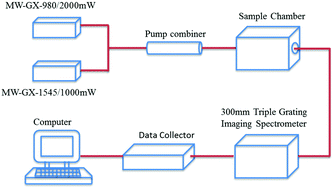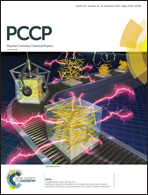Dual-mode infrared laser-excited synergistic effect in NaGdF4:Er3+ nano-glass ceramics: a kinetic model
Abstract
Realization of the absorption and conversion of wide band infrared light have been a challenge in the field of upconversion luminescence. Herein, a facile physical approach is reported to realize the cooperative absorption and conversion of dual-band infrared light by NaGdF4:Er3+ nano-glass ceramics by employing a dual-mode excitation source (980 nm + 1545 nm). A synergistic effect of infrared photons induced by dual-wavelength infrared excitation is observed. The dual-mode excited red emission intensity is 2.76 times the total red emission intensities from 980 nm and 1545 nm single excitation. This upconversion synergistic effect can be modulated by adjusting the single excitation power, and it is proved to originate from ground and excited state absorption, in which the Er3+ ions in metastable states excited by 980 nm (or 1545 nm) photons are excited again by the 1545 nm (or 980 nm) infrared photons. A rate equation model is established to simulate the dynamic process in the dual-mode infrared upconversion process. The synergistic effect provides us with a way to convert two low-energy infrared photons into middle-energy visible photons to enhance the upconversion efficiency of rare earth ion doped glass ceramics.



 Please wait while we load your content...
Please wait while we load your content...